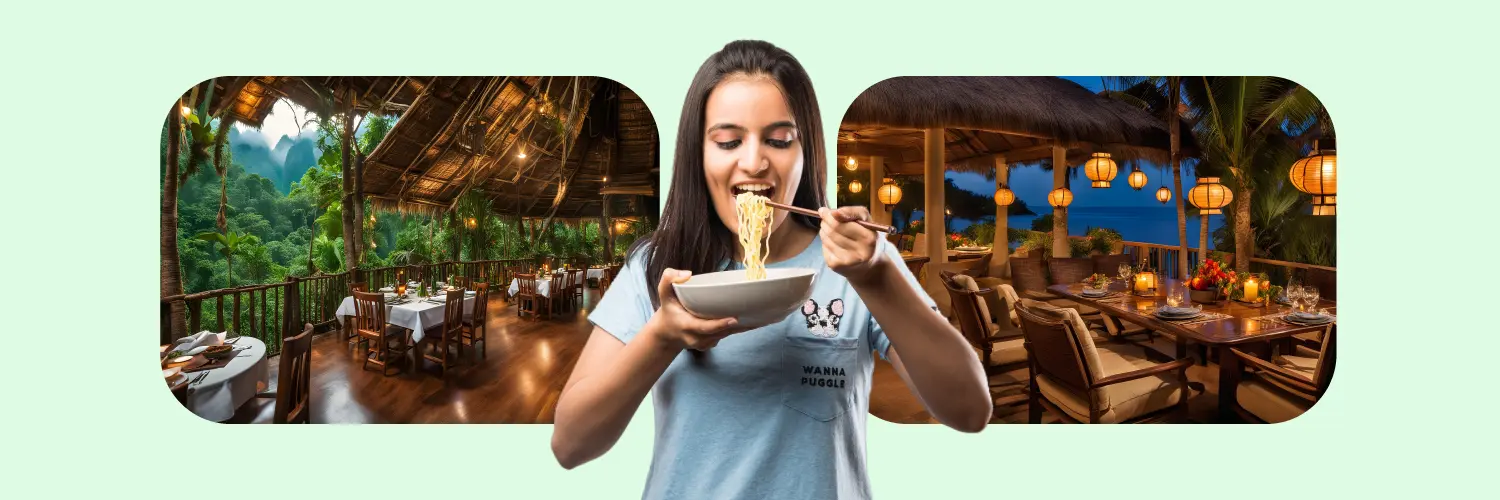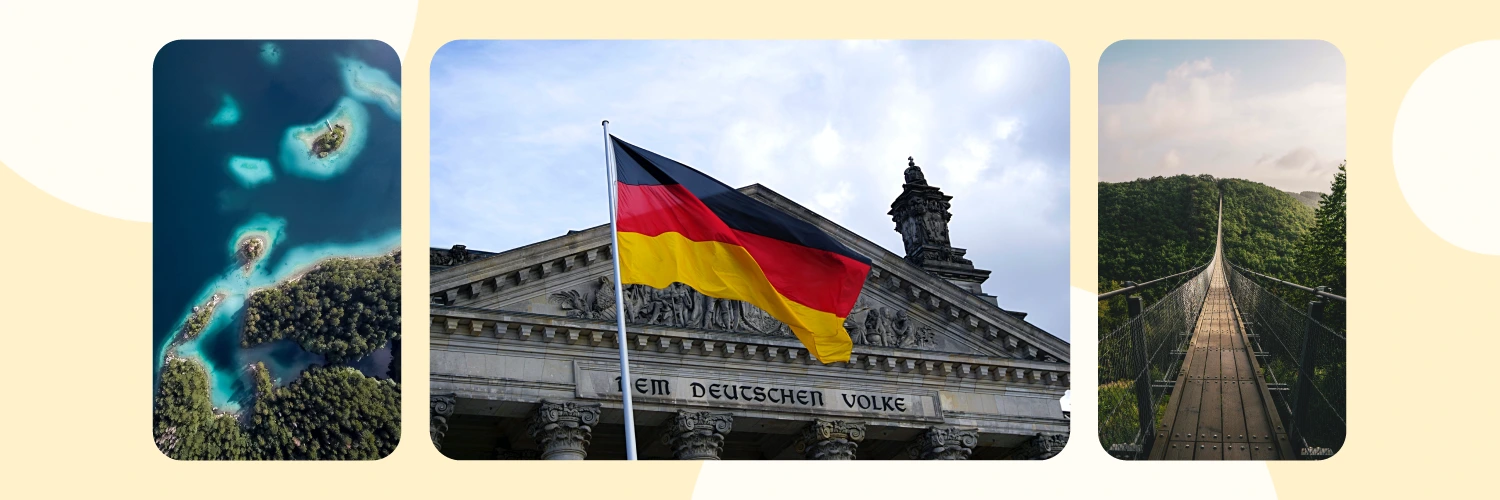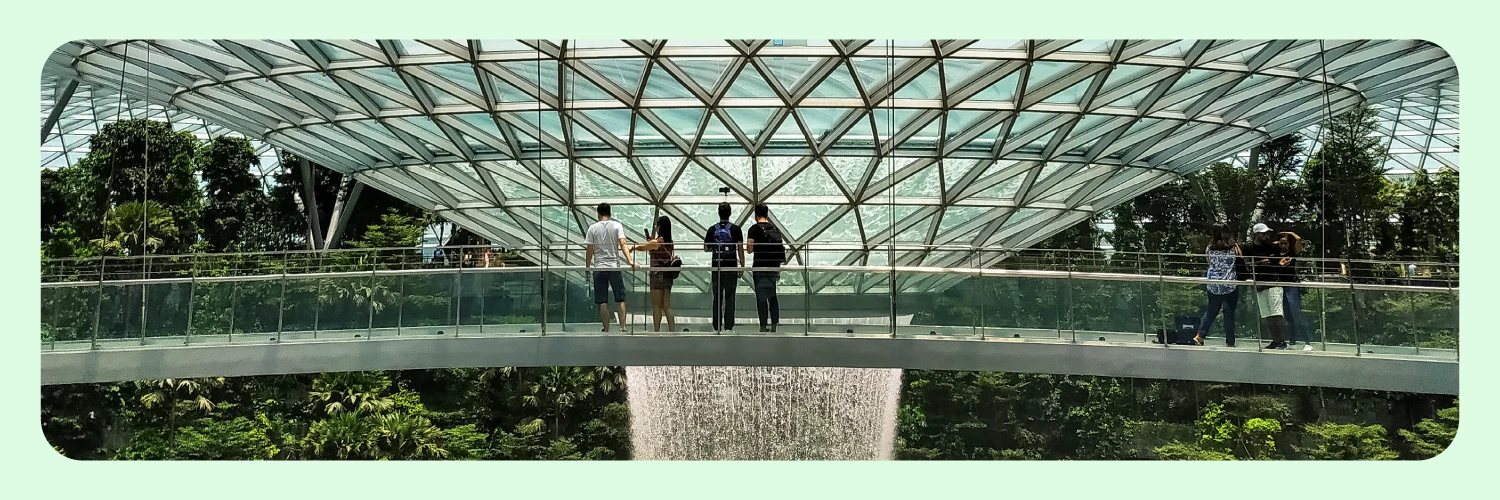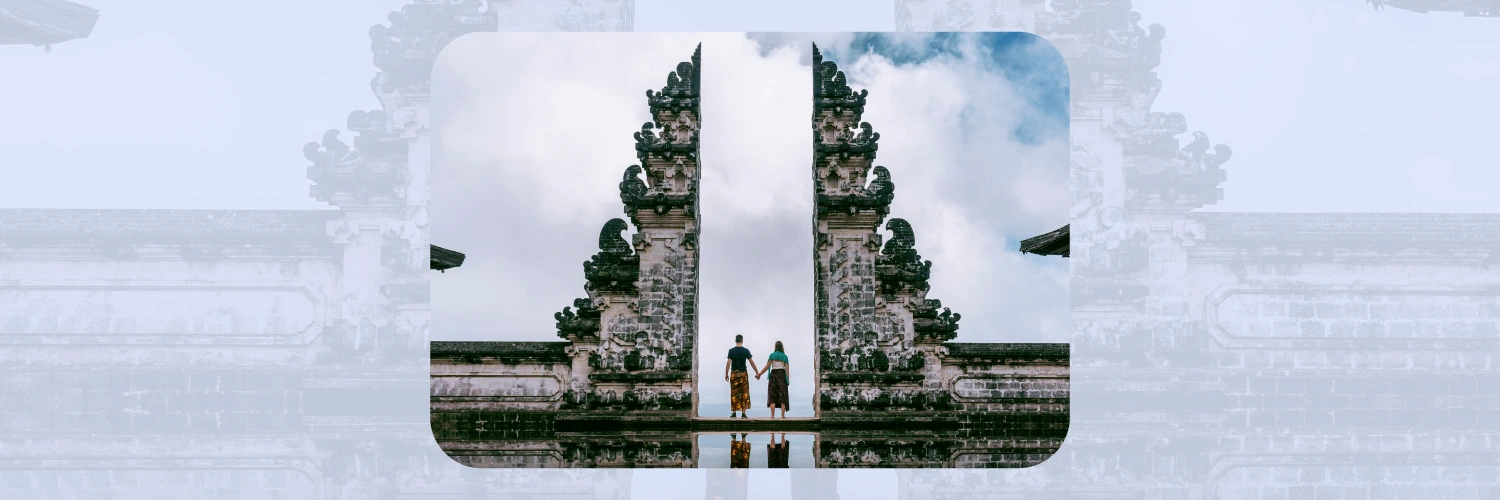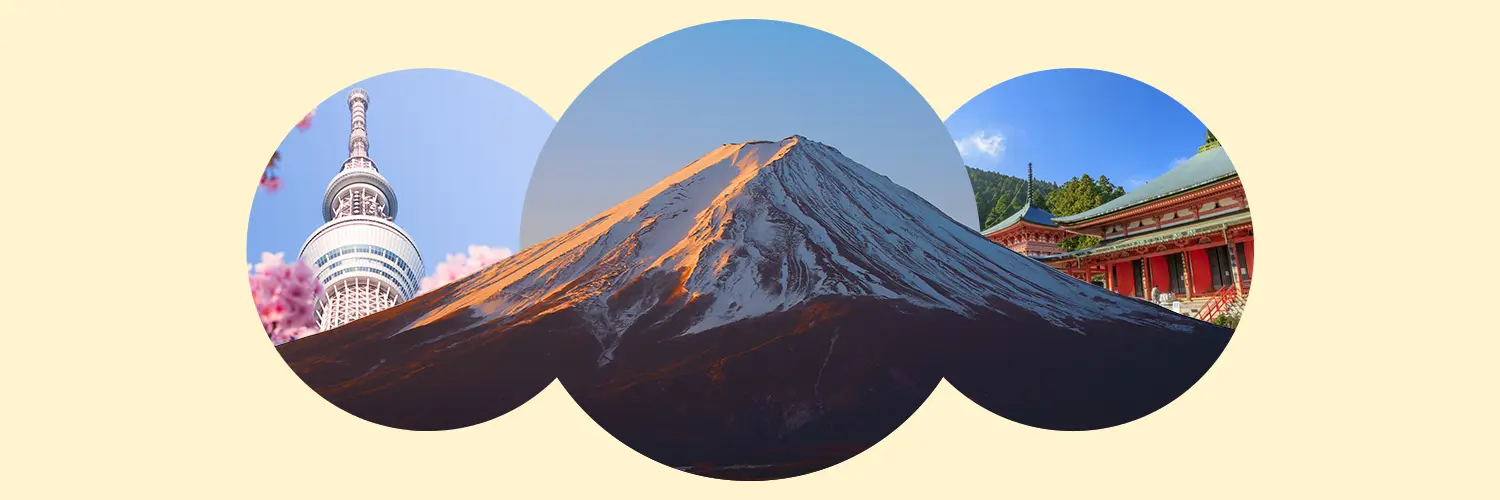
Best 11 Places to Visit in Japan for Indian Tourists
Planning a trip to Japan? Here’s your guide to the must-visit places that blend tradition, nature, and modern marvels.
Japan is all about a travel experience filled with surprises regardless of what type of an explorer you are. From religious shrines to spectacular mountains, Japan epitomises unhidden gems. So, if you are planning an international trip, you should consider Japan for all good reasons. While there are a ton, here are some places to visit in Japan that you must not miss!
1. Tokyo
While exploring every corner of this country is impossible for the first-time traveller, one place that should top your itinerary is Tokyo. Its charismatic beauty reflects the true colours of Japan. Besides exotic cuisines and top attractions, Tokyo sightseeing captures the attention of recent-world anime aficionados owing to its anime culture. If you are travelling on a budget, worry not! Tokyo has something for everyone. Here are some of the best places to visit in Tokyo:
Senso-Ji Temple
Nestled amid Asakusa, Senso-Ji Temple stands high with its glorious prominence among the places to visit in Japan. It’s one of the oldest temples, including the Ashoka shrine, a five-story pagoda, and various other attractions. At the Senso-Ji temple, there is a large shopping street where you can buy local snacks, cultural and traditional goods, souvenirs, and more!
Imperial Palace
The Imperial Palace is one of the most popular places to visit in Tokyo. It comprises a vast land with various buildings, art galleries, and museums. Most of this palace area remains closed to visitors. Upon your visit, you can spot small bridges around the space, large trees, and beautiful flowering plants.
Tokyo Disneyland
This tops the list of things to see in Japan for those with children. Tokyo Disneyland offers various themes. What else do you want besides good food and fun activities here? It’s a kid-centric place that even makes adults recapitulate their childhood memories. Ticket prices for Disneyland for adults range between JPY 7,900-10,000 (approximately ₹4,500-5,500), and for children between 12-17 years it’s JPY 6,600-9,000 (approximately ₹3,800-5,000), and for children under 12 it’s JPY 4,700-5,600 (approximately ₹2,700-3,200).
Shibuya Crossing
Shibuya’s remarkable crossing is one of the most iconic things to see in Japan. It’s one of the most popular spots in Tokyo because of the scramble crossing where easily 1500-2000 people cross Shibuya every two minutes. Most Tokyo sightseeing tours cover this spot because of how photogenic this place is. The main specialty of this Tokyo sightseeing spot is that it is home to many fashion trends in Japan, making Shibuya the centre of youth and fashion.
Meiji Shrine
The Meiji Shrine is a Shinto shrine in Shibuya. The current shrine was built in 1920 for Emperor Meiji and Empress Shoken. There are about 1,26,000 trees of 350 varieties surrounding this shrine. The lush greenery around the place makes it look more peaceful. You can opt for Tokyo sightseeing tours to know more.
Mt. Fuji
Around 100 km southeast of Tokyo lies the largest mountain in the country—Mount Fuji. Japan’s Mount Fuji attracts tourists’ attention not just for its scenic appeal, it serves as the background for a myriad of recreational and cultural events. The Chureito Pagoda is a popular spot to see Mount Fuji and is particularly beautiful during cherry blossom season. In general, Tokyo is the prime destination of all things anime. It’s the prime city where major anime stories are weaved. Besides the classic streets of Tokyo, the anime world gives special attention to Mt. Fuji. Many popular anime series have featured the magnificence of this mountain in the background, portraying a mysterious and symbolic element in anime storytelling. The Fuji Speedway is a renowned, fan-favourite destination for vehicle enthusiasts, particularly the ones interested in drifting. Its steep and bending roads provide an intriguing setup for drifting enthusiasts. The blend of panoramic beauty and adrenaline-pumping drifts creates a one-of-a-kind experience for both newbie fans and experienced competitors.
Best times to visit: Between March and April, and September and November
Local culinary specialties: Nigirizushi or edomae sushi, including topping (fish) from Tokyo Bay. Ramen is also popular in Tokyo. Vegan and Vegetarian ramen options are available across the city but more prominently in tourist areas of Harajuku, Tokyo Station, Shibuya, and Shinjuku.
Transportation options: Tokyo has an extensive train network. Tourists can use JR (Japan Rail) trains that connect major tourist areas. JR passes are also available for tourists. Buses are widely available. Tourists can pay using cash or PASMO/IC cards. Taxis are available across the city, although they may be pricey for the Indian wallet—so plan to use the much more affordable and reliable public transport wherever possible!
2. Kyoto
Kyoto is one of the largest Japanese cities known for its historical significance. It’s mostly famous for preserving its nature. Here are some things to do in Kyoto:
Kinkaku-ji (Golden Pavilion)
Kinkaku-ji is a popular historical place in Japan. The 14-century-built site is of immense significance ever since the bygone days. During WWII, the place was completely devastated and Zen Buddhists rebuilt it. The modern-day Kinkaku-Ji includes a pristine temple surrounded by gardens.
Fushimi Inari Shrine
Across southern Kyoto, Fushimi Inari Shrine stands with pride. It attracts travellers looking for things to see in Kyoto because of the thousands of vermilion Torii gates straddling different trails behind the main mountain.
Kiyomizu-Dera Temple
The impressive 3-storey Koyasu pagoda is a UNESCO World Heritage Site and medicinal waters make this spot among the prime things to see in Kyoto. There is an entry fee of JPY 400 (approximately ₹200) to visit this temple. It is open from 6 am to 6 pm. During summer, on certain days the temple is illuminated with lights and is open till 9 pm.
Arashiyama Bamboo Grove
If you are looking for casual sightseeing in Japan, walk past the enthralling Kyoto district of Arashiyama and experience the beauty of the breathtaking Bamboo Grove via a guided private walk. Entry to this iconic Bamboo Grove is free.
Gion District
Gion District is known among the places to visit in Japan for its traditional wooden storefront and diverse Geisha culture. Experience the warmth yourself by planning a visit to this district with your family.
Best times to visit: October to November or March to May
Local culinary specialities: Shojin Ryori (Vegetarian Buddhist Monk’s Meal), Kyozushi (Unique Sweet Sushi), Nishin soba (a bowl of buckwheat noodles).
Transportation options: Kyoto has an extensive public transport system—JR trains, buses and subways connect all major regions. Taxis, although pricey, are available as well.
Accommodation options: Downtown Kawaramachi is surrounded by various restaurants and shops.
3. Osaka
One of the top 15 places to visit in Japan. The pristine skyline, lip-smacking street foods, and astounding nightlife make Osaka a marvel in your Japanese trip. When you plan a visit, some of the things to do in Osaka are:
Osaka Castle
The castle symbolises Osaka’s glorious history and diverse cultures. Calling it a grandeur of the royalties is not an exaggeration. Certainly, put this on your agenda for sightseeing in Japan. Tickets to enter Osaka Castle cost JPY 600 (₹300 approximately).
Dotonbori
Unlike the historical places in Japan, Dotonbori is a vibrant epicentre of Osaka’s nightlife, pulsating with the energy of its illuminated neon signs and bustling crowds. The area is popular for its street food stalls, offering local delicacies like takoyaki (octopus balls) and okonomiyaki (savoury pancakes). It’s a must-visit for food enthusiasts looking to experience the authentic taste of Osaka.
Shinsaibashi Shopping Street
Shinsaibashi, a bustling shopping hub in Osaka, combines contemporary and traditional. With its wide array of trendy boutiques, global brand stores, and quaint local shops, it has several fascinating things to do in Osaka. It caters to all tastes and budgets. This lively street is perfect for fashion enthusiasts and those searching for unique Japanese gifts and souvenirs.
Universal Studios Japan
Universal Studios Japan is one of the most popular places to visit in Japan. It is a fantasy playground for movie buffs. This immersive theme park brings to life your favourite movies with its thrilling rides, engaging shows, and interactive attractions. Ideal for families and pop culture enthusiasts, it promises a day filled with adventure, excitement, and memorable experiences. A 1-day pass for adults costs JPY 8,600 (₹5,000 approximately).
Osaka Aquarium Kaiyukan
The Osaka Aquarium Kaiyukan offers an enchanting journey into the marine world. Its massive tanks house an array of sea creatures from around the globe, showcasing the diversity of ocean life. Educational and captivating, it’s a fantastic destination for families and nature lovers, providing a serene and awe-inspiring escape from the city’s hustle.
Best times to visit: October to November or March to May.
Local culinary specialties: Sushi, takoyaki, udon, negiyaki, yakisoba and more.
Transportation options: Osaka has an extensive network of subways and trains. Travellers can use PASMO/IC cards or cash to get tickets.
Accommodation options: neighbourhoods of Minami, Kita, Shin-Osaka, and Honmachi (Central Osaka).
4. Yokohama
Yokohama Chinatown
Being the Greater Tokyo Area’s high-tech industrial hub and Japan’s largest port city, Yokohama is one of the top places to visit in Japan.
Yokohama Chinatown
It’s the largest Chinatown in Japan, larger than both Nagasaki Chinatown and Kobe Chinatown. One of the main attractions in Japan, It comprises over 600 shops in the 2,50,000 square meter area. You can find yourself a good place to treat your taste buds with exotic Japanese cuisines. Indian tourists can also find vegan and vegetarian options in some restaurants.
Sankeien Garden
Sankeien Garden in Yokohama is a picturesque landscape that captures the essence of Japanese beauty and tranquillity. This Japan attraction’s meticulously maintained gardens, historic buildings, and seasonal flowers offer a peaceful retreat. It’s a favourite for those seeking a serene escape and a glimpse into traditional Japanese garden design.
Yokohama Landmark Tower
The Yokohama Landmark Tower, soaring high over the city, is a marvel of modern architecture. It’s a hub of activity with luxurious accommodations on its upper floors and a diverse selection of shops, restaurants, and businesses below. It offers stunning city views, making it a prime spot for visitors. Do consider this spot if you are looking for fun things to do in Japan.
Yamashita Park
Yamashita Park is a popular public space among the places to visit in Japan. It is along the scenic waterfront of Yokohama Bay. With its lush greenery and open spaces, this expansive park provides a relaxing atmosphere for picnics, strolls, and enjoying the seaside ambience. It’s a famous place for both locals as well as tourists to unwind.
Osanbashi Pier
Osanbashi Pier is steeped in history as Yokohama’s oldest pier and a key portal in Japan’s international trade. Today, it’s a picturesque spot which makes it one of the tourist attractions in Japan. Visitors can enjoy stunning views of the harbour, observe the bustling activities of ships, and feel the pulse of Yokohama’s maritime heritage.
Best times to visit: Depending on your list of places to visit in Japan,choose between September to November and March to May.
Local culinary specialities: Sanma-men (Famous Yokohama Ramen), Spaghetti Napolitan, Gyu-nabe (A Beef-Pan), and more.
Transportation options: Yokohama has an extensive network of trains and subways. Buses ply between major tourist destinations. Tourists can use their PASMO/IC card or pay via cash.
Accommodation options: Kikuna, Hiyoshi, and Kawasaki neighbourhoods.
5. Nagoya
Nagoya has a long history of featuring the country’s second most worshipped shrine. It’s home to Kusanagi Sword. Here’s a list of places to visit in Japan when you land in Nagoya:
Nagoya Castle
Nagoya Castle is a popular historical place in Japan. It is a majestic symbol of the city’s heritage, standing tall with its impressive architecture and storied past. The castle grounds house a museum rich in history, showcasing artefacts that narrate tales of feudal Japan. It’s a must-visit for history buffs and those fascinated by Japan’s samurai era.
Atsuta Shrine
Atsuta Shrine, deeply rooted in the spiritual fabric of Nagoya, is a serene and revered site. Founded nearly two millennia ago, this shrine draws visitors for its peaceful ambience and historical significance. Shintoism’s profound tranquillity and tradition make it famous among the tourist attractions in Japan
Osu Kannon Temple
Osu Kannon Temple is a place of spiritual reverence and a cultural treasure trove. Another famous historical place in Japan, Osu Kannon Temple with an extensive collection of 15,000 ancient texts and manuscripts, offers a unique glimpse into the rich tapestry of Chinese and Japanese literary history, appealing to both the devout and the intellectually curious.
Toyota Commemorative Museum
It boosts the cultural and historic importance of the place—starting from the advent of textile machinery manufacturers to recent-world industrial superpower status and everything in between.
Nagoya City Science Museum
Nagoya City Science Museum houses the world’s largest planetarium. It’s a kids-friendly place. Tickets for adults to the museum and planetarium are priced at JPY 800 (₹400 approximately). For high school and university students, tickets are priced at JPY 500 (₹250 approximately).
Best times to visit: September to November
Local culinary specialities: Miso-katsu (Pork Cutlet with Miso Sauce), Miso-Nikomi udon (Noodle Soup with Miso Broth), and hitsumabushi (Grilled Eel Dish).
Transportation options: Trains and subways connect all major tourist sites in Nagoya. Buses are also available.
Accommodation options: Issha and Hongo neighbourhoods.
6. Kobe
A cosmopolitan yet port city, Kobe boasts Japan’s best beef. Visit the following places when you’re in Kobe:
Kobe Port Tower
Standing tall at 90 meters, Kobe Port Tower offers breathtaking panoramic views of the city and harbour. Its unique architecture and observation deck make it a prime spot for visitors to capture the beauty of Kobe from above, both by day and under the twinkling city lights at night.
Arima Onsen
Arima Onsen, nestled in the natural beauty of Kobe, is a tranquil retreat offering peace and relaxation. Famous among places to visit in Japan, it’s the perfect getaway for those seeking to unwind and experience traditional Japanese onsen culture amidst serene surroundings and therapeutic hot springs.
Nunobiki Falls
Near the heart of Kobe, Nunobiki Falls is a natural wonder with a rich cultural significance. This collection of majestic waterfalls, celebrated in literature and art, offers a picturesque escape into nature. It’s an ideal spot for a refreshing hike and to enjoy the tranquil sound of cascading water. Kobe Harborland
Kobe Harborland
Kobe Harborland is a bustling waterfront area, a hub of shopping, dining, and entertainment. Home to the Umie complex, it combines trendy malls, cosy cafes, and a variety of restaurants. It is perfect among the places to visit in Japan as it is a place to shop, dine, and soak in the lively atmosphere of Kobe’s waterfront.
Mount Rokko
Outstanding hiking trails, international history, and matchless views of Osaka and Kobe make Mount Rokko a must-visit place. The hike to the top takes about 2.5 hours.
Best times to visit: Depending upon your list of places to visit in Japan, choose between October to November and March to May.
Local culinary specialties: Kobe beef, Chuka Ryori (Japanese-Chinese Cuisine), Akashiyaki (Small Round Dumpling), Korokke (Croquette), Gyoza (Juicy-Meaty Dumplings), and more.
Transportation options: Like most cities in Japan, Kobe has an extensive network of trains and subways. IC/PASMO cards can be purchased and used for buses and trains. Taxis are available, although relatively expensive.
Accommodation options: Sannomiya and Takarazuka neighbourhoods.
7. Fukuoka
Fukuoka is a crossroads between different cultures that connects the world to stunning beauty and ancient history. It is one of the places to visit in Japan that you must not miss!
Fukuoka Castle
If you want to know more about the Japanese culture, you must visit Fukuoka Castle. It is also known as the Maizuru Castle or Seki Castle. Fukuoka Castle used to be the largest castle in Japan during the Edo Period (1603-1868) but was almost completely torn down when Meiji came to power. It’s an ideal place for you if you’re into Japanese history.
Ohori Park
This museum offers a great collection of sculptures and art, such as works by Dali & Miro. Opposite this museum, you will see a small pay-to-enter garden with teahouses, a small pond, and a stone garden.
Dazaifu Tenmangu Shrine
It is a popular shrine among Japanese students who pray for their exam results. A tourist can learn the art and culture of this shrine after paying a visit. There is no entry fee to this Shinto shrine.
Canal City Hakata
Canal City Hakata is more than just a shopping centre; it’s an exciting, vibrant destination blending retail, entertainment, and art. With its unique canal running through, this complex offers a wide array of shops, eateries, and regular events, making it a lively spot for an enjoyable day out. It certainly is among the must-visit places in Japan.
Fukuoka Tower
Standing tall against the city skyline, Fukuoka Tower is among the many places to visit in Japan that offers a spectacular night-time experience. As the sun sets, the tower lights up, creating a mesmerising display that changes with the seasons. The observation deck provides stunning panoramic views of Fukuoka, making it a must-visit for an unforgettable evening.
Best times to visit: October to November and March to May
Local culinary specialties: Hakata Ramen (Ramen made of Pork Bones Soup), Goma Saba (Sesame-Flavoured Mackerel), Udon (Thick Noodle Made from Wheat Flour), and more.
**Transportation options:**Several buses are available in Fukuoka. Subway and JR/Nishitetsu trains connect major tourist attractions.
Accommodation options: Nakasu in Hakata Ward, Tenjin in Chuo Ward, etc.
8. Hiroshima
Besides the Atomic Bomb Dome, Hiroshima is famous for okonomiyaki pancakes, cycling, hiking, and other activities. Here’s a rundown of the places to visit:
Hiroshima Peace Memorial (Atomic Bomb Dome)
The Hiroshima Peace Memorial is one of the most popular places to visit in Japan. It is commonly known as the Atomic Bomb Dome, and stands as a poignant reminder of the tragic past and the importance of peace. Visiting this UNESCO World Heritage site is a powerful, emotional experience, connecting visitors to the historical events of 1945.
Hiroshima Peace Memorial Park
This park is a solemn tribute to the victims of the atomic bombing. With its memorials, monuments, and museum, the park provides a space for reflection and learning about the impacts of nuclear warfare, emphasising the message of peace and resilience of Hiroshima.
Hiroshima Castle
Hiroshima Castle, also called Carp Castle, is one of the most popular historical places in Japan. Rebuilt after the war, the castle offers a glimpse into Japan’s feudal past. Visitors can explore the castle’s museum, enjoy its beautiful grounds, and gain insight into Hiroshima’s rich cultural heritage.
Itsukushima Shrine on Miyajima Island
Itsukushima Shrine is an ideal example of the unique and rare architectural design symbolising Japanese culture. Add this to your list of must-visit places in Japan. The ferry to Miyajima Island costs JPY 4,000 (₹2,000 approximately) for a round trip. JR Pass holders do not need to pay an additional fee to use this ferry service.
Shukkeien Garden
Amidst the myriad places to visit in Japan , Shukkeien Garden is an oasis of tranquillity. Located amidst Hiroshima’s urban landscape. This beautifully landscaped garden offers a serene escape with its meandering paths, tea houses, and miniature landscapes. It’s a perfect spot for relaxing and appreciating the aesthetics of traditional Japanese gardens.
Best times to visit: October and November.
Local culinary specialties: Okonomiyaki (Japanese Pancake), Momiji manju (Steamed Bun Stuffed with Sweetened Bean Paste), Oysters, and more.
Transportation options: Bus and tram services are available throughout the city. Hiroshima also has a widespread subway system. Taxis are also available across the city. Tourists can purchase a pass for using trams.
Accommodation: Minami-Ku Osugacho, Danbara, Hijiyama and Shinonom neighbourhoods.
9. Sapporo
Sapporo is known as a summer haven and winter wonderland. Enjoy the outdoor fun, famous beer, and great food when you’re in this destination.
Odori Park
Odori Park is surrounded by trees. It has a fragrant rose garden on its west side and fountains in the middle. It is a 10-minute walk from the south of JR Sapporo station. In early February, the Sapporo Snow Festival takes place in this park. The Sapporo TV Tower is at the eastern end of the park, which has an observation deck with nice views of the park and the surrounding city.
Sapporo Clock Tower
It’s a hotspot for family get-togethers. Sapporo Clock Tower comprises a gallery and museum on its ground floor that’s dedicated to the history and accomplishments of Sapporo Agricultural College’s teachers and graduates.
Sapporo Beer Museum
Looking for fun things to do in Japan? Don’t miss this one! Sapporo Beer Museum was initially recognised as a sugar factory in 1890. Later on, it became a beer factory, and now it is known as a museum. It samples delicious beer and is a great place for photographers to capture historical buildings and other intricacies.
Maruyama Park
This park’s centre-stage attraction is the old weeping cherry tree. Its drooping branches are filled with blossoms. It is lit up at night when the tree offers an ethereal beauty.
Hokkaido Jingu Shrine
Hokkaido Jingu Shrine is your go-to place for spiritual rejuvenation. Its refined beauty with four guardian gods deserves special mention. This is one of the best places to visit in the cherry blossom season.
Best times to visit: Late April to mid-May and December to February (for winter lovers).
Local culinary specialities: Soup Curry, Butter Corn Ramen, Miso Ramen, Jingisukan, and Zangi.
Transportation options: Hokkaido has 3 subway lines, all intersecting at Odori Park. Buses and taxis are available across the city.
Accommodation options: Odori Park, Nakajima Park to name a few.
10. Nara
Nara, a city steeped in history, is a treasure trove of World Heritage sites, showcasing Japan’s rich cultural tapestry. It’s one of the top places to visit in Japan and a peaceful haven where ancient shrines and temples abound, each telling its own story.
Todai-ji Temple
Todai-ji Temple in Nara is a breathtaking architectural marvel, famous for the world’s largest bronze statue of Buddha. This historic temple, surrounded by serene gardens and wildlife, is a testament to Japan’s rich cultural heritage. Visiting here offers a blend of spiritual reverence, artistic appreciation, and a journey through history.
Nara Park
According to legends, a white deer carried the God from Ibaraki, in the north of Japan down to the Kasugataisha Shrine in an era when deer were sacred. Today, it has become home to free-roaming deers who bow, in traditional Japanese style, to visitors in exchange for a treat. Tourists can feed these deers special food sold across the park.
Kasuga Taisha Shrine
Kasuga Taisha Shrine is a place where various gods are enshrined. This place attracts both tourists and devotees seeking a marvellous Shinto experience. Tickets to this shrine cost JPY 500 (INR 250 approximately) for adults.
Nara National Museum
Nara National Museum preserves the heritage of Japanese Buddhism. It’s the best place to discover how Buddhists were established in Nara. It is home to Buddist art, sculptures, images, and other articles. Tickets to the Nara National Museum are priced at JPY 600 (₹300 approximately).
Isuien Garden
Back in the bygone days, Isuien Garden happened to be a luxury place enjoyed by wealthy merchants in the Meiji (1868–1912 AD) and Edo (1603-1868 AD) periods. This is a popular historical place in Japan. You can relive the past by visiting the place.
Best times to visit: October to November and March to May
Local culinary specialities: Traditional Rice Porridge, Persimmon Leaf Sushi, Nara Noppe, and Mehari Rice Balls
Transportation options: Nara has an extensive network of buses to take you around major tourist destinations. The Nara line is covered in the JR pass. There are trains available to major tourist attractions.
Accommodation options: Rental houses or apartments, hotels, and guesthouses near the JR Nara station are a convenient option.
11. Takayama
From beautiful surroundings to picturesque streets, a visit to Takayama offers an outstanding experience.
Old Town
Takayama’s Old Town with its charming streets and traditional wooden houses, is like stepping back in time. Walking through Sanmachi Suji, visitors can experience the authentic ambience of old Japan. The area is filled with quaint shops, sake breweries, and local eateries, offering a true taste of historical Takayama.
Takayama Jinya
Takayama Jinya is one of the most popular historical places in Japan. A preserved national historic site now, it offers a glimpse into Japan’s feudal past. This former government house with its well-preserved architecture and historical exhibits, provides a unique glimpse into the bureaucratic life of the Edo period. It’s a must-visit for those interested in Japanese history and culture.
Hida Folk Village
A visit to Hida Folk Village would give you a glimpse of its prime feature—the gassho-zukuri houses. These houses have steeply sloped thatched roofs. It’s designed for heavy snow to slide off easily.
Takayama Matsuri Yatai Kaikan
Takayama Matsuri Yatai Kaikan is a museum devoted to the spectacular floats of the Takayama Festival. Festival Floats Exhibition Hall is located at Sakurayama Hachiman Shrine’s ground.
Shirakawa-go Village
This is a UNESCO World Heritage Site, famous for its Gassho-zukuri houses. A short trip from Takayama to Shirakawa-go Village would help you unwrap the architectural marvel—Gassho-zukuri.
Best times to visit: October to November
Local culinary specialities: Takayama Ramen, Mitarashi Dango, Pickled Vegetables, and Hida Soba Noodles
Transportation options: The Sarubobo Bus is a bus for tourists that runs every 30 minutes. Machinami Bus and the two Takumi Bus lines run from Takayama Station around the town centre. Taxis are also available.
Accommodation options: Hotels in Takayama Centre, Sanmachi (old town area), and Takayama Station Area
Key Takeaways
- Japan offers a mesmerising blend of modern marvels, ancient traditions, natural beauty, and cultural richness.
- From the bustling streets of Tokyo to the serene temples of Kyoto, the country promises a diverse array of experiences for every traveller. Whether you’re seeking adventure, history, culinary delights, or scenic landscapes.
- Popular places to visit in Tokyo include Senso-Ji Temple, Imperial Palace, Tokyo Disneyland, Shibuya Crossing, Meiji Shrine, and Mount Fuji. Tourists can use Tokyo’s extensive network of trains to easily get around the city.
- Kyoto, the ancient capital of Japan is ideal for tourists seeking a glimpse of Japan’s past. Kinkaku-ji, Fushimi Inari Shrine, Kiyomizu-Dera Temple, Arashiyama Bamboo Grove, and Gion District are some of the best things to do in Kyoto.
- Osaka is a bustling city with many tourist attractions. Osaka Castle, Dotonbori, Osaka Aquarium Kaiyukan, Shinsaibashi Shopping Street, and Universal Studios Japan are some of the top things to do in Osaka.
- Located about two hours away from Tokyo, Yokohama is a popular tourist destination. Tourists can visit Osanbashi Pier, Yamashita Park, Yokohama Landmark Tower, Yokohama Chinatown, and Sankeien Garden.
- Tourists attractions in Nagoya include Atsuta Shrine, Osu Kannon Temple, Toyota Commemorative Museum, Nagoya City Science Museum, and Nagoya Castle
- Kobe is famous for its beef and other tourist attractions such as Kobe Port Tower Arima Onsen, Nunobiki Falls, Kobe Harborland, and Mount Rokko.
- Top things to do in Fukuoka include visiting Fukuoka Castle, Ohori Park, Dazaifu Tenmangu Shrine, Canal City Hakata, and Fukuoka Tower.
- Hiroshima is known for its historical relevance. Hiroshima Peace Memorial (Atomic Bomb Dome), Hiroshima Peace Memorial Park, Hiroshima Castle, Itsukushima Shrine on Miyajima Island, and Shukkeien Garden are famous attractions.
- Sapporo in the north of Japan is ideal for winter lovers. Odori Park, Sapporo Clock Tower, Sapporo Beer Museum, Maruyama Park, and Hokkaido Jingu Shrine are some of the must-visit attractions.
- Nara is famous for its deer park and temples and shrines such as Todai-ji Temple and Kasuga Taisha Shrine.
- Takayama is a popular historical place in Japan. It’s Old Town, Takayama Jinya, Hida Folk Village, Takayama Matsuri Yatai Kaikan, and Shirakawa-go Village are some of the popular attractions.


